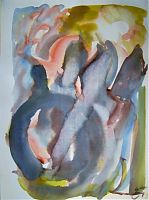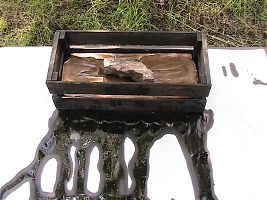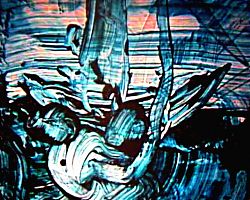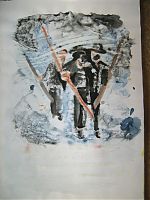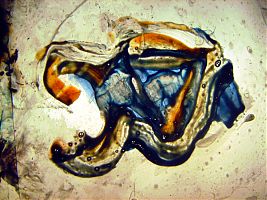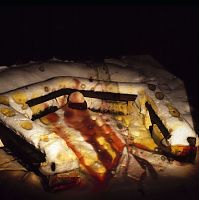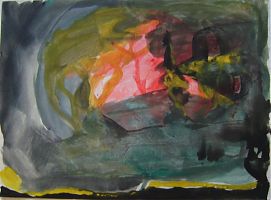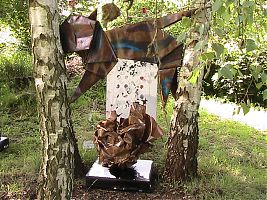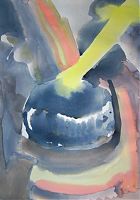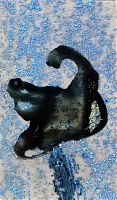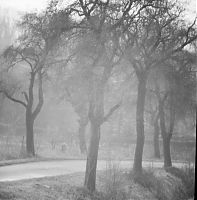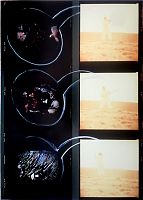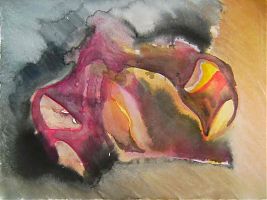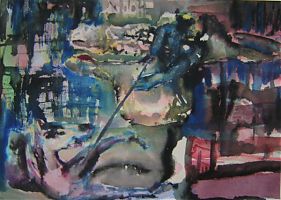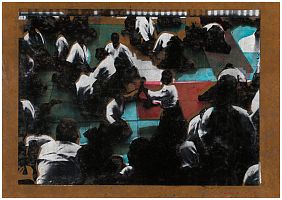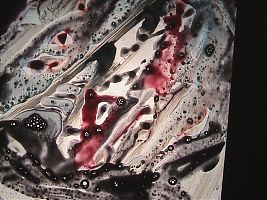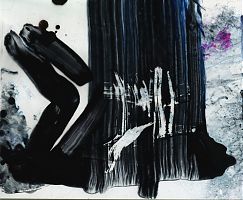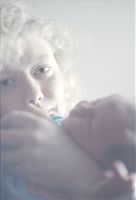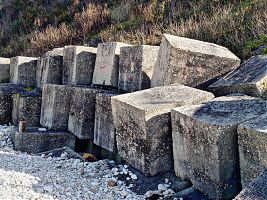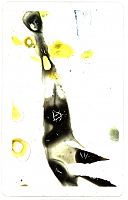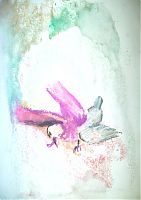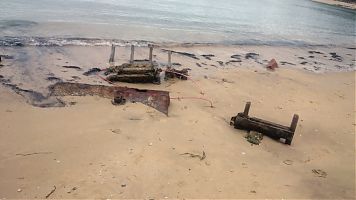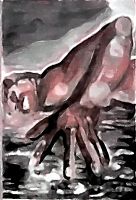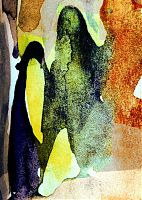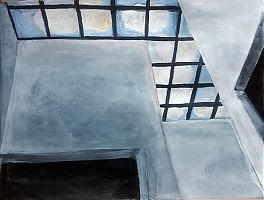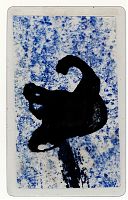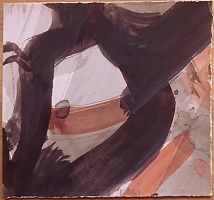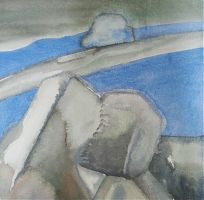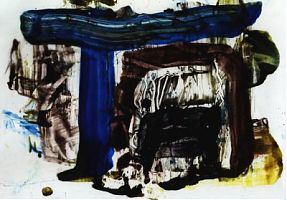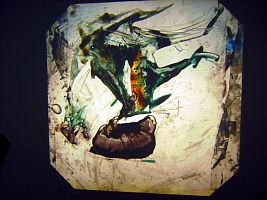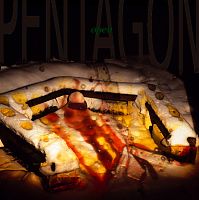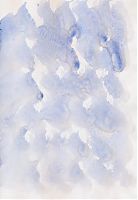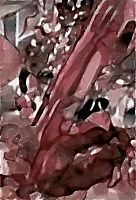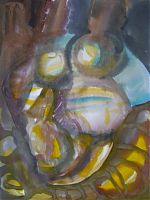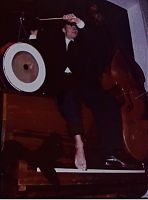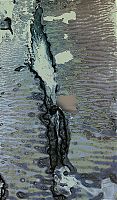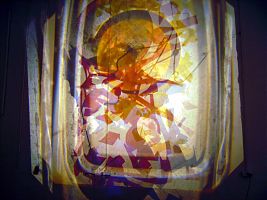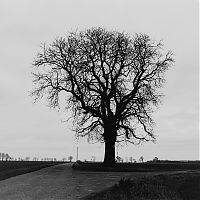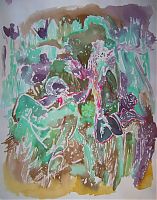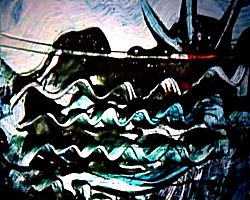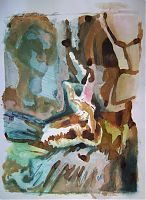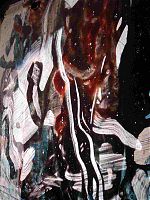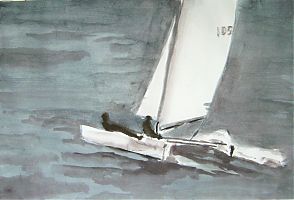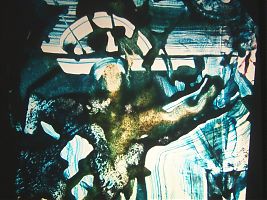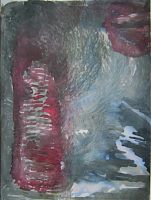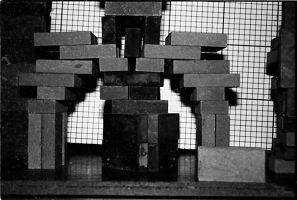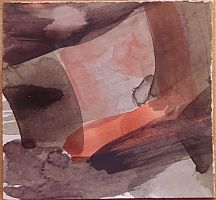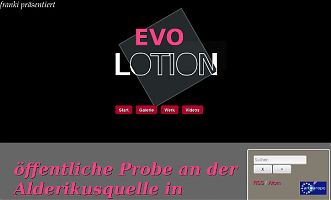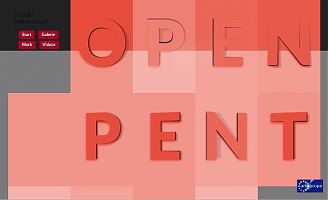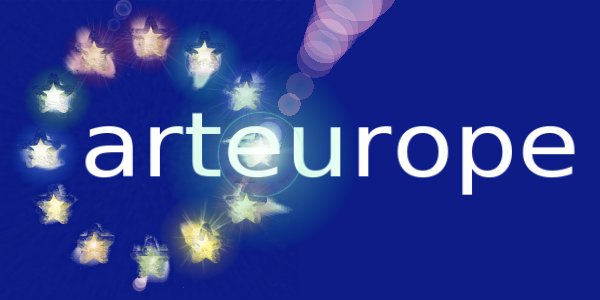Blue sketchbook sheet 8
Datum
Richscribble

Blatt 8 vom blauen Skizzenbuch, Aquarell auf Papier, DIN A4, zart gehaltenes Richscribble, Zülpich 2009
What are Richscribbles?
Richscribble watercolors from johann franki's blue sketchbook follow the label 'Make big what you like'. All original sheets from the sketchbook were denied the contrasting "wash", the final overpainting that introduces the shadows to create depth and highlight the light areas, in order to avoid a restrictive color and design definition. This process is only carried out with editors on the PC during digital processing and thus preserves freedom of interpretation, which only receives its final definition in a separate print file.
Process
A high-resolution scan is made of the rich scribble and the digital result is interpreted and processed.
Now the most beautiful part of the work begins, because coherent, harmonious and exciting details are sought, which have a strong character as cut-outs, details are refined and finally scaled to the size of the DIN A1 format.
I use different sketchbooks and actually they were supposed to be yearbooks, maybe even uniform in content, drawings here, watercolors in the other, but that never worked out. Project-relatedness is more of a recognizable criterion, but even that is not chronologically continuous. An old sketchbook starts in 1992, takes a break for years, then exhibition concepts were noted, organizational matters, building plan sketches and in between drawings and watercolours and there are still a few pages free for 2024. I take my sketchbooks as they are available.
In the so-called „blue sketchbook“, which I must have bought in 2008 for the conception of Livingroom 4, I found a whole lot of pale rich scribbles waiting to be interpreted.
Richscribbles sind reichhaltige, oft übermalte Skizzen, aus denen ich „spannende“ Bereiche heraushole. Sometimes I cut up a canvas or a sheet of paper, or take a photo or a scan of it and then continue working on it digitally.
The sheet 8 presented here is kept so delicate that after drying, a second wash is applied to characterize the darker areas that contrast with the light, delicate areas. However, I rarely opted for a single interpretation and saved this beautiful and surprising work until I had a good scanner of my own again.
It took a few years because I simply didn’t want to spend time with scanners. I kept looking for specialist companies that could do it professionally. When I finally found the right one, the owner changed shortly afterwards without me realizing it and then I got some real crap at home with a hefty bill. It was one of two scanning companies based in Germany that had by far the best scanner on the market, one in southern Germany, the other in Cologne. I’m talking here about the Hasselblad Flextight X5, very maintenance-intensive and only for specialists, so this 20000 € super scanner would never pay off for an artist and probably not for a group of artists either. In any case, after the change of ownership, which remained unknown to me, I ordered scans with Flextight, but the results returned were shabby, not even cleaned beforehand and also processed with excessive contrast and sharpening. I paid anyway and was glad when I had my originals safely back with me. I then bought one on the Internet for around €180, or was it €280? and am satisfied with the quite decent performance, which is 3 classes better than what I had paid so dearly for.
As far as photo work is concerned, slides and negatives, my flatbed scanner with built-in transparency can’t hold a candle to the Hasselblad Flextight X5 when I want to enlarge from 6×6 medium format to over 1m x 1m. With sketch sheets in A4, the difference is not quite so great, in other words, my Canon 9000 does a pretty good job, which I can perfect thanks to my training with professional programs on the original.
You can see how rich such a richscribble is if you just contrast a few areas more, adjust the color saturation, or strengthen or soften lines and textures. In the example of sheet 801, this creates a completely new order, with some areas coming to the fore and others in the background. These fine alluvial lines, which I love and which are normally avoided by skilled watercolorists, create a fine drawing on the paper.
Thanks to the enormous resolution of the scan, I can delve so deeply into the picture that I can even see the paper fibers. Going on a search here with different zooms is a special creative act.
Unfortunately, I have not yet managed to develop this effect of the drying lines with more pasty colors in large format. I would have to redraw it, but, as you already know me, I would never do something so boring. Water always behaves the same, which means the lines wouldn’t get any thicker, if you use a large sheet, a broom instead of a brush and lots of watercolor paint, the fine, sharp drying lines won’t get a millimeter wider.
In this detail, three areas of color surrounded by drying lines have touched me, all pushing towards a center point. It reminds me of an important chess stratagem, namely the rapid occupation of the center, a vital lesson for chess players, but also transferable to other areas, e.g. economics or management. I find the luminance excellent, the chrominance, the interplay of colors is quiet, yet powerful and lively due to its diverse gradations.
An even deeper look lets me find this crumb, this little lost dot in the felt-like texture of the background. Very simple and yet very rich. It’s not just a dot on a white sheet. The dot is actually a mustard-colored, glowing surface that seems to cast a shadow on the fur-like, hairy background, perhaps just the right statement to colleagues in noisy open-plan offices. In such a setting, I recommend 1m x 1m with a passe-partout and a slightly reddish thin wooden frame, perhaps cherry wood.
weitere Artikel zum Thema richscribble
